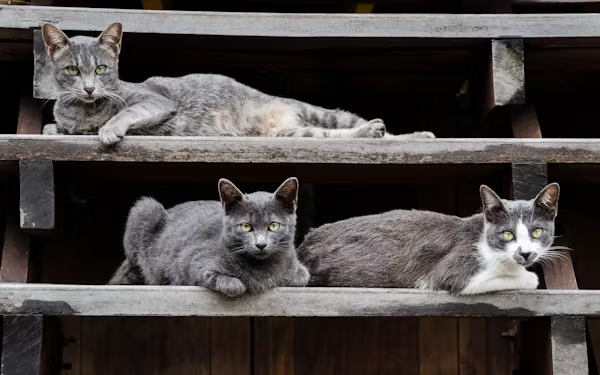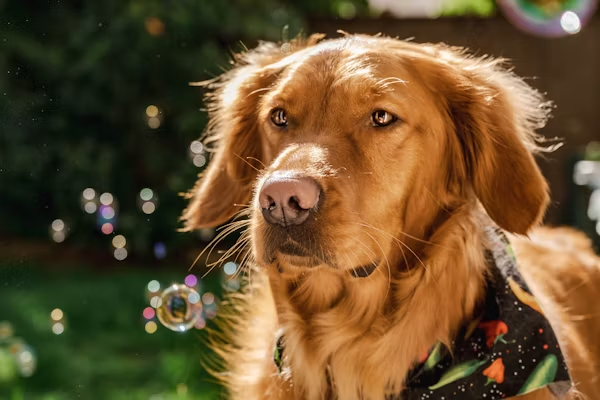The Strangest Dog and Cat Behaviors and What They Really Mean

Pets bring joy, companionship, and often a bit of mystery into our lives. Whether you’re a dog lover, a cat enthusiast, or both, you’ve probably encountered some strange behaviors that leave you wondering, “What on earth is my pet doing?” In this blog, we will explore some of the quirkiest behaviors exhibited by our furry friends and delve into the reasons behind them.
1. Dogs Chasing Their Tails
Explanation:
Tail chasing is a common behavior among dogs, especially puppies. While it may seem like just playful antics, there are several reasons behind this behavior.
What It Means:
- Playfulness: For many dogs, chasing their tails is a fun way to burn off energy.
- Boredom: Dogs that lack stimulation may resort to tail chasing as a form of entertainment.
- Anxiety or Stress: In some cases, tail chasing can indicate anxiety or compulsive behavior.
2. Cats Kneading
Explanation:
Cats often knead with their paws, pushing in and out against soft surfaces. This behavior can be seen in both kittens and adult cats.
What It Means:
- Comfort and Security: Kneading is instinctual for cats, often stemming from their kittenhood when they knead their mother’s belly to stimulate milk flow.
- Marking Territory: Cats have scent glands in their paws, and kneading can help them mark their territory.
- Relaxation: Kneading can indicate that a cat feels relaxed and comfortable in their environment.
3. Dogs Howling
Explanation:
Howling is a vocalization that many dogs engage in, often associated with certain breeds like Huskies and Beagles.
What It Means:
- Communication: Dogs howl to communicate with other dogs over long distances.
- Response to Sounds: Some dogs howl in response to sirens, music, or even their owner’s singing, often joining in the “conversation.”
- Separation Anxiety: Dogs may howl when left alone as a way to express their distress.
4. Cats Bringing Home “Gifts”
Explanation:
Cats have a reputation for bringing their owners “gifts,” such as mice, birds, or even insects.
What It Means:
- Hunting Instincts: This behavior is a natural instinct for cats, showcasing their hunting prowess.
- Sharing: Some experts believe that cats bring home prey to share with their humans as a form of bonding.
- Teaching: Mother cats often bring prey to their kittens to teach them how to hunt, so your cat might be trying to teach you as well!
5. Dogs Scratching at the Ground
Explanation:
Dogs often scratch at the ground, whether outdoors or indoors, before lying down.
What It Means:
- Nesting Behavior: This instinctual behavior comes from their wild ancestors, who would scratch the ground to create a comfortable resting area.
- Temperature Regulation: Scratching can help dogs cool off or warm up by disturbing the surface layer.
- Scent Marking: Dogs have scent glands in their paws, and scratching can help them leave their mark.
6. Cats Hiding in Small Spaces
Explanation:
Cats love to squeeze into tight spots, whether it’s a cardboard box or a cozy nook in your home.
What It Means:
- Safety and Security: Small spaces provide a sense of safety, allowing cats to feel hidden from potential threats.
- Exploration: Cats are naturally curious creatures, and tight spaces allow them to explore their environment more thoroughly.
- Hunting Behavior: Hiding can mimic their natural hunting instincts, where they stalk prey.
7. Dogs Rolling in Smelly Things
Explanation:
Dogs are known for rolling in anything that smells particularly strong, including mud, grass, or even feces.
What It Means:
- Scent Camouflage: Rolling in strong scents may help dogs mask their own scent, which is an instinctive behavior inherited from their wild ancestors.
- Exploration: Dogs experience the world through their sense of smell, and rolling in scents can be a way of investigating their environment.
- Pure Enjoyment: Sometimes, it’s just fun for them! Dogs love to explore textures and scents.
8. Cats Chattering or “Chirping”
Explanation:
Cats sometimes make a unique chattering or chirping sound, particularly when they spot birds or other small prey outside.
What It Means:
- Excitement: This sound often indicates excitement or frustration as they observe potential prey.
- Mimicking Sounds: Some theories suggest that cats may be mimicking bird calls to lure them closer.
- Instinctual Behavior: It may also be an instinctive response reflecting their predatory nature.
9. Dogs “Smiling”
Explanation:
Dogs can display a range of facial expressions, including what appears to be a smile.
What It Means:
- Relaxation and Happiness: When dogs relax their mouths and tongues, it can appear like a smile, indicating they are content.
- Submissive Behavior: Sometimes, dogs will show this expression as a way to convey submission to their owners or other dogs.
- Social Interaction: Dogs often mirror the emotions of their human companions, displaying happiness through smiles.
10. Cats “Trilling”
Explanation:
Trilling is a mix between a meow and a purr, often used by cats to communicate with their owners.
What It Means:
- Greeting: Cats often trill as a way of saying hello, especially when they see their owners after some time apart.
- Attention-Seeking: Trilling can also indicate a cat is seeking attention or food from their human.
- Bonding Behavior: It can signify a strong bond between the cat and its owner, similar to how a mother cat communicates with her kittens.
Conclusion
Understanding the strange behaviors of dogs and cats can enhance our relationship with these beloved companions. While some actions may seem baffling at first glance, they often stem from instincts, comfort, or a desire to communicate. By paying attention to these behaviors, pet owners can foster a deeper connection with their furry friends, ensuring that their needs are met and their unique personalities are appreciated.
So, the next time your dog chases its tail or your cat brings you a “gift,” remember that these quirks are part of what makes them so special. Embrace the weirdness, and enjoy the endless surprises that come with being a pet owner!




